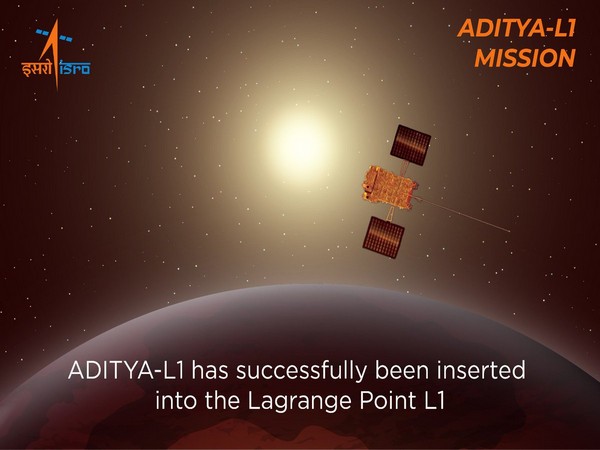
Picture : ISRO / X
The Indian Space Research Organisation performed the final manoeuvre to inject Aditya-L1 spacecraft — the first space-based Indian observatory to study the Sun — into its final destination orbit, some 1.5 million kilometres from the Earth.
President Droupadi Murmu tweeted ,
Another grand feat accomplished by ISRO! As part of India’s maiden solar mission, Aditya L1, the observatory has been placed in the final orbit and reached its destination at Lagrange Point 1. Congratulations to the entire Indian scientist community for the great achievement!…
— President of India (@rashtrapatibhvn) January 6, 2024
“India creates yet another landmark, country’s first solar observatory Aditya-L1 reaches its destination,” Prime Minister Narendra Modi said on X while announcing the news.
“Testament to relentless dedication of our scientists in realising among most complex space missions. I join nation in applauding extraordinary feat; we’ll continue to pursue new frontiers of science,” he added.
India creates yet another landmark. India’s first solar observatory Aditya-L1 reaches it’s destination. It is a testament to the relentless dedication of our scientists in realising among the most complex and intricate space missions. I join the nation in applauding this…
— Narendra Modi (@narendramodi) January 6, 2024
The Lagrange point 1 (L1) of the Sun-Earth system is about 1.5 million km from the Earth. It is about one per cent of the total distance between the Earth and the Sun.
A satellite in a halo orbit around the L1 point has the major advantage of continuously viewing the Sun without any occultations/ eclipses, ISRO officials said, adding, this will provide a greater advantage in observing solar activities and their effect on space weather in real time.
A Polar Satellite Launch Vehicle (PSLV-C57) launched the Aditya-L1 spacecraft from the second launch pad of Satish Dhawan Space Centre (SDSC), Sriharikota, on September 2, 2023.
[the_ad id=”55725″]


















